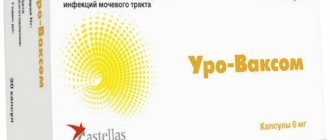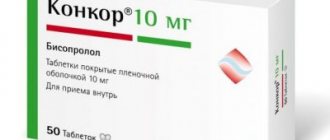When should you take antacids?
Antacids are prescribed to get rid of heartburn, which is a companion to many diseases of the digestive tract, including: stomach ulcers, reflux esophagitis, functional dyspepsia, etc.
In past years, antacids were widely used to treat various pathologies of the digestive system. However, the discovery of proton pump inhibitors and H2 receptor blockers, these drugs faded into the background. Modern drugs not only temporarily neutralize increased stomach acidity, but also reduce acid production, and they act for quite a long time.
However, antacids were not forgotten. Their advantage is the high speed with which they begin to act. In addition, antacids have a lower cost compared to proton pump drugs and H2 blockers.
Contraindications and restrictions for use
The list of contraindications to the use of antacid drugs is small. First of all, it is necessary to exclude:
- allergic reaction to drug components,
- clinically and functionally significant impairment of renal function,
- Alzheimer's type dementia.
In some cases, some antacids are contraindicated for lactating and pregnant patients. The use of antacids should be carefully regulated for children of different ages and patients with impaired macronutrient metabolism (increased levels of calcium, magnesium), impaired absorption of fructose, glucose and galactose.
How antacids work
The stomach needs acid so that it can digest food. It is a very caustic substance, but it does not corrode the gastric walls, since they are covered with a special mucous layer. It is this that protects the stomach from the destructive effects of acid and prevents erosions and ulcers from forming.
However, sometimes the mucous membrane is damaged due to various circumstances, which gives acid access to the walls of the stomach, and it begins to corrode them. As a result, a person develops an ulcer. When the sphincter, which is a natural partition between the stomach and esophagus, weakens, acid can be thrown up. As a result, it begins to irritate the walls of the esophagus, causing inflammation of the organ. This phenomenon is called “reflux esophagitis.”
Taking antacids allows you to neutralize the acid in the stomach, since these drugs contain alkaline bases. They work to counteract acids. This reaction is called a neutralization reaction in scientific circles.
After taking antacids, the aggressiveness of gastric juice decreases, which reduces the pain that can cause ulcerative lesions. Also, these drugs quickly relieve heartburn.
Types of antacids
Calcium, magnesium and aluminum compounds are the basis of antacids. Depending on how the body absorbs the drug, antacids are distinguished between absorbable and non-absorbable.
Absorbed drugs are absorbed by the intestinal walls and dissolve in the blood. This determines the rapid therapeutic effect of taking the drug. However, they also have a negative side - a large number of side effects. Therefore, experts do not recommend taking them. Absorbable antacids include baking soda and calcium and magnesium carbonate medications.
Non-absorbable antacids do not have a lightning-fast effect, but they last much longer. The main active ingredient is aluminum and magnesium hydroxide or aluminum phosphate. Sometimes they are combined in one drug. Aluminum envelops the gastric wall, covering it with a protective barrier, and magnesium restores the damaged mucous barrier. Drugs that belong to the group of non-absorbable antacids: Almagel, Phosphalugel, Maalox, Gastal, etc.
Sometimes doctors prescribe combination medications that have not only antacid, but also other therapeutic effects. Such drugs are used to relieve symptoms and to eliminate one or another pathology of the gastrointestinal tract (in complex therapy), and they can also reduce the severity of side effects from taking antacids.
For example, a drug called Almagel Neo contains simethicone, which helps eliminate flatulence. Bloating is often observed after taking antacids. However, simethicone allows you to break up gas bubbles in the intestines and remove them out.
Also in the composition of antacids you can find alginic acid and its salts, alginates. This helps protect the walls of the esophagus from stomach acid. Once in the stomach, sodium alginate or alginic acid is converted into a gel. It floats on the surface of the gastric contents and prevents them from leaving the organ. As a result, the esophagus remains protected from irritation. Such drugs are often used in the complex treatment of reflux esophagitis. For example, this is a drug called Gaviscon.
You can also find antacids with an analgesic component, for example, a drug called Almagel A.
Selection of the optimal antacid drug in clinical practice
M.I. SHCHYOKINA
, Ph.D.,
MEDSI Clinic, Gastroenterology Department, Moscow
,
I.M.
SHCHERBENKOV , PhD,
CELT, Moscow The problem of rational pharmacotherapy of acid-dependent diseases (ADD) of the upper gastrointestinal tract is relevant due to its high prevalence, especially among people of working age, complex etiopathogenesis, and the presence of a large arsenal of drugs.
Currently, the group of gastric ulcers and duodenal ulcers, gastroesophageal reflux disease (GERD), functional dyspepsia, symptomatic ulcers with Zollinger-Ellison syndrome, ulcers associated with taking non-steroidal anti-inflammatory drugs (NSAIDs), peptic ulcers of gastroenteroanastomosis, ulcers with hyperthyroidism, idiopathic hypersecretory condition, ulcers arising from celiac enteropathy [2, 5, 8].
Today, more and more effective means of drug control of gastric acid formation are appearing, with a minimum of side effects. In the treatment of CZD, two main groups of drugs are widely used - antisecretory drugs and antacids, which provide effective control over acid formation. The effect on the secretory function of the stomach can occur extracellularly - at the level of receptors and intracellularly - at the final stage of hydrochloric acid secretion. Extracellular suppression of the activity of the acid-peptic factor can be achieved by neutralizing hydrochloric acid already released in the lumen of the stomach and duodenum (antacids). The receptor level is realized by blocking the receptors of cells that secrete hydrochloric acid (M-anticholinergics, histamine H2 receptor blockers). By influencing the intracellular enzymes of parietal cells involved in the formation of hydrochloric acid (proton pump inhibitors - PPI), the intracellular process of blocking the secretion of hydrochloric acid is realized [1, 4, 8, 18].
The choice of a specific drug depends on a number of parameters: the required degree of inhibition of hydrochloric acid production, the duration of the effect obtained, the presence of certain adverse reactions, and the possibility of long-term use of the drug.
Antacids
Antacids have been used several centuries ago as a treatment for CVD. Even with the advent of drugs from other pharmacological groups (PPIs, H2-blockers, etc.), which are currently included in the standards of treatment for GERD, peptic ulcer disease, FND, antacids have not lost their importance. Against the backdrop of the widespread use of highly effective antisecretory drugs PPIs, data are also accumulating on the possible adverse effects of long-term treatment with PPIs. Thus, PPIs, being agents that block the enzyme systems of gastric parietal cells, can make the latter more vulnerable to various damaging agents. There is more and more information about the development of hypergastrinemia even after short courses of PPI use. There are also cases of intolerance to PPIs, forcing doctors to stop taking them to patients. PPIs are of little use due to their characteristic latent period of action and for the correction of acute dyspeptic disorders where emergency anti-acid care is needed, as well as in the so-called. therapy on demand.
Thus, a number of studies have shown an increase in the risk of community-acquired Clostridium difficile, as well as associated pseudomembranous colitis, associated with PPI use. The role of long-term use of PPIs in infection of the respiratory system is actively discussed. Based on a study including 135,386 patients, Yang Y. et al. (2006) reported an increased risk of hip fracture in patients receiving long-term PPI therapy. In addition, against the background of prolonged alkalization of the stomach, there is a tendency to reduce the production of bicarbonates by the pancreas, which can lead to an increase in the viscosity of pancreatic secretions and, as a consequence, to disruption of its outflow [2, 8, 14, 15]. This information, as well as the identification of additional properties in antacid drugs, is a reason to continue their active use:
•firstly, antacids are able to adsorb bile acids and lysolecithin (involved in damage to the mucous membrane of the stomach and esophagus); •secondly, they have a protective effect associated with stimulation of prostaglandin synthesis (and in this regard have priority use in cases where the pathogenesis of ulcers or damage to the mucous membrane is associated with a weakening of the protective properties of the latter); • thirdly, the ability of antacids to bind epithelial growth factor and fix it in the area of the ulcerative defect has been revealed, thereby stimulating local repair and regenerative processes, cell proliferation and angiogenesis, promoting the full restoration of the mucous membrane in a functional sense, which significantly lengthens the period of remission.
With endoscopically negative GERD, it is possible to take antacids with drugs that normalize the motility of the stomach and duodenum (prokinetics). When treating GERD, it is better to use antacids in the form of a suspension or gel containing Al and Mg hydroxide. In case of ulcer-like variant of FD, it is recommended to use antacids, and in the absence of effect - PPIs, histamine H2 receptor blockers and antacids on demand, in case of non-specific variant of FD - antacids and prokinetics. Treatment regimens for chronic superficial and atrophic gastritis with a morphologically confirmed diagnosis also include antacids. Antacids are the drugs of choice if there are contraindications to taking other antisecretory drugs, side effects of PPIs, histamine H2 receptors, or intolerance to these drugs [5, 7, 8, 10].
Occasional use of antacids is also possible for healthy people when they develop symptoms of gastric dyspepsia (heartburn, gastralgia, epigastric discomfort), which manifests itself due to errors in diet, alcohol consumption, overeating, etc.
During the use of antacids, the reaction of neutralization of hydrochloric acid in the gastric cavity continues until a pH of 3.0–4.0 is reached. These values still allow the stomach to perform physiological functions and are more favorable for the digestion process.
It is a well-known fact that the patient always prefers a drug that quickly relieves a painful symptom for him. Here antacids have no competition. However, one should not go to the extreme, replacing effective pathogenetic therapy of acid-dependent pathology with the help of PPIs with, albeit quick, but, unfortunately, short-term relief of the symptoms of the disease with antacids. A modern doctor must rationally combine medications in accordance with their pharmacological characteristics and the nature of the disease.
The heterogeneity in their properties and mechanism of action on the body, as well as the variety of antacid drugs, creates certain difficulties in choosing the optimal option in clinical practice. All antacids act in the lumen of the stomach and/or directly at its wall and have a similar mechanism of action. It consists of direct interaction with hydrochloric acid of gastric juice. At the same time, the irritating effect of hydrochloric acid on the gastric mucosa decreases, and the intragastric pH increases to 4–5. An increase in pH in the stomach is accompanied by a decrease in the activity of a number of proteolytic enzymes and a weakening of the action of aggressive factors. The strength of antacid drugs is determined by their acid neutralizing activity (ANA), which is expressed in milliequivalents (the amount of 1N hydrochloric acid titrated to pH 3.5 with a certain dose of the drug over a set time). The CNA of different antacids varies significantly. It is considered low if it is less than 200 mEq/day; medium – in the range of 200–400 mEq/day and high – more than 400 mEq/day.
The rate of onset of the antacid effect is determined by the rate of dissolution of the drug and its dosage form. The rapid development of a buffer effect is characteristic of sodium bicarbonate, calcium carbonate, and magnesium hydroxide, which dissolve quite easily in the stomach. Suspensions usually dissolve faster than solid dosage forms. The duration of action of antacids is significantly influenced by the rate of their evacuation from the stomach, which, in turn, is determined by the presence or absence of food in the stomach. An antacid taken 1 hour after a meal stays in the stomach longer and provides a longer-lasting effect [2, 5, 9, 11].
Traditionally, all antacids are divided into absorbable (BA) and non-absorbable (NA).
VA include:
• sodium bicarbonate (soda - NaHCO3); • magnesium oxide (burnt magnesia); • basic magnesium carbonate – a mixture of Mg(OH)2, 4MgCO3, H2O; • basic calcium carbonate – CaCO3; • Bourget's mixture (Na sulfate, Na phosphate, Na bicarbonate); • a mixture of calcium carbonate and magnesium carbonate.
VA (sodium bicarbonate, or baking soda) - act briefly, neutralizing hydrochloric acid. When absorbed, they can significantly affect the exchange of electrolytes, causing the development of alkalosis (weakness, headache, loss of appetite, nausea, vomiting, abdominal pain, muscle spasms and cramps). The risk of alkalosis is especially high in patients with impaired renal function. At the same time, sodium bicarbonate leads to alkalization of urine and promotes the formation of phosphate stones, worsening the body's water-electrolyte metabolism. This, in turn, can cause increased blood pressure, increased edema and increased signs of heart failure in elderly patients with pathology of the cardiovascular system. VA is characterized by a rebound phenomenon with a secondary increase in the secretion of hydrochloric acid. Increased acid secretion is also facilitated by the release of carbon dioxide during the neutralization reaction, which stretches the walls of the stomach and causes pain. Carbon dioxide also causes belching and flatulence - side effects that are especially undesirable for patients with GERD. In gastric peptic ulcers with a deep ulcerative defect, stretching of the stomach walls is fraught with perforation (i.e., they stimulate gastric secretion), so VAs are not used in the treatment of CZD. Due to the large number of side effects, they have practically lost their clinical significance and are used by the population mainly for self-medication as symptomatic remedies to relieve certain symptoms of gastric dyspepsia. However, the adherence of many patients to this particular group is due to the fact that VAs quickly relieve heartburn and epigastric pain. The duration of the latent period in this group of antacids is much shorter, which means that the speed of onset of the neutralizing effect is greater than that of NA (although the acid-neutralizing effect of the latter is longer). Therefore, some patients are not satisfied with the speed of onset of the antisecretory effect and mistakenly consider NAs to be ineffective [2, 8, 11, 15, 16].
Non-absorbable antacids
NAs are divided into 3 groups:
1st – aluminum salt of phosphoric acid; 2nd – aluminum-magnesium antacids; 3rd – aluminum-magnesium preparations with the addition of Alginate.
Since the main mechanism of action of NA is associated with the adsorption of hydrochloric acid, their effect develops somewhat more slowly (within 10–30 minutes) than that of absorbed drugs. Having a larger buffer (neutralizing) capacity than VA, their duration of action reaches 2.5–3 hours. Most drugs from this group contain aluminum and magnesium compounds in varying proportions. In this case, the initial antacid effect is provided by magnesium salts, and the prolonged effect is provided by aluminum compounds.
In addition to neutralizing free hydrochloric acid in the stomach, NAs adsorb pepsin and bile acids, help reduce intracavitary pressure in the stomach and duodenum, and have an indirect antispasmodic effect. NAs neutralize the negative impact of duodenogastric reflux on CO and have a cytoprotective effect.
Regardless of the composition, all NAs reduce the absorption of other drugs when used together, which must be taken into account when prescribing a medication regimen (for example, cardiac glycosides, indirect anticoagulants, antihistamines, hypnotics and many other drugs). In this regard, it is necessary to follow a single rule: the time interval between taking antacids and other drugs should be at least 2 hours.
Long-term use of antacids containing calcium can lead to hypercalcemia and the development of milk-alkali syndrome. In addition, hypercalcemia causes a decrease in parathyroid hormone production and, as a consequence, a delay in phosphorus excretion and leads to the accumulation of insoluble calcium phosphate. Against this background, tissue calcification and the development of nephrocalcinosis are possible. Also, antacids containing calcium can lead to constipation as a result of slowing the evacuation function of the intestines [1, 4, 5, 8].
When using antacids, the daily dose of the antacid is distributed and administered depending on the diet:
- it is recommended to take an antacid 1 hour after a meal - during the period when the buffering effect of food ceases at the height of maximum gastric secretion; – taken 3 hours after meals – to replenish the antacid equivalent after evacuation of gastric contents; – taken before bedtime – to suppress nocturnal secretion; – during the period of exacerbation of the disease, it is recommended to take antacids every 1–2 hours, followed by administration during the inter-digestive period; – it is necessary to take into account the individual pain profile, timing the intake of drugs at the time of their occurrence; – VA for pain relief is recommended to be taken 30–40 minutes after meals, and NA - in the intervals between meals; – it is more effective to prescribe antacids in small portions, but more often.
Tactics for choosing an antacid drug
Against the background of increased cytotoxic effects, protective factors are inevitably depleted. Excessive production of hydrochloric acid disrupts the dynamic balance between the rate of destruction and renewal of glycoproteins that make up the protective layer, which opens the way for the increasing cytotoxic effects of aggressive factors. In this regard, the direct cytoprotective effect of aluminum-containing antacids is extremely important, which lies in the fact that they have an enveloping effect and create a protective film on the surface of the mucosa. Aluminum promotes the binding of epithelial growth factor and its fixation in the area of the bottom of the ulcer or erosion, which stimulates the division of gastric epithelial cells and new formation of blood vessels.
Considering the above, it is necessary to remember the cytotoxicity of bile acids and lysolecithin, which irritate the mucous membrane of the stomach and esophagus during gastroduodenal and esophagogastroduodenal reflux. Aluminum-containing antacids actively absorb bile acids and lysolecithin, which enhances the therapeutic effect [8, 11, 12, 17, 19].
Complexes containing several compounds have recently been increasingly used as antacids, which makes it possible to vary the speed of onset of the therapeutic effect, the duration of the drug’s effect, and also to minimize its side effects. From a clinical point of view, it is important that combined antacid drugs additionally affect intestinal motility depending on the AL/Mg ratio. Preparations containing relatively large amounts of aluminum are more likely to contribute to the development of constipation, while preparations with a relatively high magnesium content have a moderate laxative effect.
Gastal is a modern combined antacid containing magnesium hydroxide and aluminum hydroxide. The antacid effect of the drug appears immediately after taking the tablets and lasts about 2 hours. One tablet of Gastal neutralizes about 21.5 mmol of hydrochloric acid. The drug inhibits the action of pepsin, lysolecithin and bile acids. Has no systemic effect in patients with normal renal function. After interacting with hydrochloric acid of gastric juice, aluminum hydroxide reacts with phosphates and carbonates in the alkaline environment of the intestine and is released in the form of insoluble salts. Magnesium hydroxide reacts with hydrochloric acid in gastric juice to form magnesium chloride, which has an osmotic laxative effect in the small intestine. Magnesium is also excreted in the feces as insoluble carbonate. A balanced ratio of aluminum and magnesium salts allows you to avoid constipation or diarrhea while taking the drug.
The high ability of the non-absorbable antacid drug Gastal to effectively and quickly eliminate the appearance of heartburn (burning) and pain in the epigastric region associated with the acid-peptic factor makes this drug one of the drugs of choice in the treatment of CDZ in clinics and hospitals.
Conclusion
Rational pharmacotherapy of CDZ is based on the use of modern antacids, taking into account their basic pharmacokinetic, pharmacodynamic properties, clinical effectiveness and safety, and individualization of therapy. The use of this group of drugs not only improves the prognosis of the disease and the patient’s quality of life, but also helps to increase the patient’s adherence to therapy.
Literature
1. Kukes V.G. Clinical pharmacology. M.: GEOTAR-Medicine, 2007. 2. Bordin D.S. Advantages of non-absorbable antacids // Attending physician. 2011. No. 2. pp. 50–55 3. Elokhina T.B., Tyutyunnik V.L. Gastroesophageal reflux disease during pregnancy // Rus. honey. magazine 2008. No. 16 (19). pp. 1243–1247. 4. Roytberg G.E., Strutynsky A.V. Internal illnesses. Digestive system. M.: MEDpress-inform, 2007. 5. Minushkin O.N., Elizavetina G.A. Antacids in modern therapy of acid-dependent diseases // Gastroenterology of St. Petersburg. 2010. No. 2–3. pp. 9–12. 6. Maev I.V., Dicheva D.T., Krasnikov V.V., Buragina T.A. The use of antacids in the complex therapy of severe gastroesophageal reflux disease // Attending physician. 2007. No. 1. 7. Ivashkin V.T., Trukhmanov A.S. Modern approach to the treatment of gastroesophageal reflux disease in medical practice // RMZh. 2003. No. 2. pp. 43–48. 8. Antacids. Rational pharmacotherapy of diseases of the digestive system / edited by. ed. V.T. Ivashkina. M., 2003. pp. 38–42. 9. Are aluminum-containing antacids safe? From the editor // Klin. Pharmacol. and therapist 2004. No. 13(1). 10. Lazebnik L.B., Drozdov V.N. Diseases of the digestive system in the elderly // Anacharis. 2003. 205 p. 11. Belousov Yu.B., Moiseev V.S., Lepakhin V.Kh. Clinical pharmacology and pharmacotherapy. M., 2000. 12. Gubergrits N.B. Application of Maalox in gastroenterological practice // Suchasnagastroenterology. 2002. No. 4. pp. 55–9. 13. Onuchina E.V., Gorobets E.A., Rozhansky A.A., Tsukanov V.V. Symptoms of gastroesophageal reflux disease in pregnant women // Attending physician. 2010. No. 2. 14. Gubergrits N.B., Khristich T.N. Clinical pancreatology. Donetsk, 2000. 15. Ivashkin V.T., Baranskaya E.K., Shifrin O.S., Yuryeva E.Yu. The place of antacids in modern therapy of peptic ulcer // RMZh. 2002. No. 4(2). 16. Minushkin O.N. and others. Modern aspects of antacid therapy. M., 1998. 17. Sheptulin A.A. gastroesophageal reflux disease: controversial and unresolved issues // Klin. honey. 2008. No. 6. pp. 8–12. 18. Trukhmanov A.S. The latest data on reflux disease of the esophagus. Advances in conservative treatment // Ros. magazine gastroenterol., hepatol., coloproctol. 1997 No. 1. pp. 39–44. 19. Fedenko G.D. The role and place of antacids in the treatment of acid-related diseases // Health of Ukraine. 2006. No. 2. pp. 23–5.
List of absorbable antacids
Absorbable antacids are substances that dissolve in the blood. The acidity of gastric juice decreases very quickly after taking them. However, such drugs do not last long. In addition, they cause the so-called acid rebound, in which the production of hydrochloric acid increases immediately after the drug ceases to act. The disadvantages of absorbed antacids also include the fact that they contribute to increased formation of carbon dioxide in the body, which leads to overstretching of the gastric walls and provokes gastroesophageal reflux. The entry of bicarbonates into the bloodstream leads to systemic alkalosis.
The longer a person takes antacids, the more likely they are to develop constipation and hypercalcemia. If these drugs are combined with milk, vomiting, polyuria, and transient azotemia may develop. The development of urolithiasis also cannot be ruled out.
Drugs from the group of absorbable antacids:
- Sodium bicarbonate.
- Calcium carbonate.
- Basic magnesium carbonate.
- Magnesium oxide.
- A mixture of Bourget based on phosphate and sodium sulfate with the addition of bicarbonate.
- Medicines: Rennie, Andrews antacid, Tams.
Classification
The list of antacids is divided according to their ability to be absorbed into the systemic circulation.
- Absorbable antacids are an older class that are more likely to cause adverse reactions. Their use is ideal for occasional relief of symptoms; the therapeutic effect is noticeable within 2-5 minutes after use.
- Non-absorbable antacids are salts of various macroelements that do not enter the bloodstream and act directly on the gastric mucosa and in its lumen. First of all, these are magnesium- and phosphorus-containing antacids, as well as drugs with the additional addition of alginate, which additionally envelops the mucous membrane of the esophagus, stomach and intestines. Their therapeutic effect occurs a little slower, but lasts longer (about 1-2 hours). That is why new generation antacids have found wider use in gastroenterological practice.
The best antacid, based on clinical studies, is Maalox : it has the best clinical effect along with the longest duration of action.
Briefly about baking soda
You can often find the use of baking soda dissolved in a glass of water, which is incorrect if you want to relieve the symptoms of hyperacidity. Against the background of neutralization of an excess amount of hydrochloric acid, free carbon dioxide is released, the bubbles of which cause additional irritation and damage and trigger the formation of new portions of hydrogen chloride. The so-called “vicious circle” closes, which ultimately does not lead to relief of the condition.
List of non-absorbable antacids
Non-absorbable antacids are based on aluminum hydroxide, aluminum phosphate, magnesium hydroxide and magnesium trisilicate. Their effect is somewhat delayed in time, but it lasts for 3 hours. They reduce the acidity of gastric juice, leaving it at around 3-4 pH.
The following groups of non-absorbable antacids are distinguished:
- Based on aluminum phosphate: Alfogel, Gasterin, Phosphalugel.
- Based on aluminum and magnesium: Almagel, Altacid, Alumag, Gastracid, Maalox, Maalukol, Palmagel.
- Topalcan and Gaviscon are based on a combination of sodium and calcium or silicon, aluminum and magnesium with the addition of alginate.
- The preparations Almagel A and Palmagel A contain a combination of aluminum and magnesium with the addition of benzocaine, which has an analgesic effect.
- The drugs Almagel Neo, Gestid and Relzer are based on magnesium and aluminum, but they also contain simethicone, which reduces gas formation in the intestines.
- Preparations containing aluminum, calcium and magnesium: Renny-Tal, Rutacid, Taltsid, Tisacid. Magnesium hydroxide and hydrotalcite are present in the drug Gastal.
Comparison of the effects of taking different antacids
A study of the antacid properties of various drugs was carried out at the Central Research Institute of Gastroenterology. For this purpose, the method of intragastric pH-metry was used. The obtained data are presented in the table.
| Criteria | Name of the drug | ||||
| Almagel | Remagel | Phosphalugel | Megalax | Maalox | |
| Onset of effect in minutes | 13,5 | — | — | — | 8,9 |
| Duration of action in minutes | 28 | 32,5 | 40 | 46 | 56 |
| Alkalinization area | 6,6 | 4,5 | 5,4 | 6,5 | 13,2 |
| Alkalinity index | 9,0 | 11,4 | 6,7 | 13,5 | 18,0 |
Maalox began to act faster than other drugs, and Almagel began to act later than all others. Maalox also turned out to be the leader in the duration of the effect. The effect of Almagel ended the fastest: 56 minutes versus 28 minutes. Steel preparations are “between” the leader and the laggard. Analysis of all the data obtained allows us to conclude that the drug Maalox has the maximum degree of alkalizing effect.
How to take antacids?
Before taking antacids, it is recommended to consult a doctor and also study the instructions that come with each medicine. Most often, antacids are aimed at eliminating the symptoms of a particular digestive disease, or in order to prevent their occurrence.
How long does it take for the effect to occur? How long should antacid treatment last?
Absorbed drugs begin to act very quickly, almost immediately after administration. Non-absorbable antacids have the desired effect after 10-15 minutes.
As for the duration of use, it is determined by the frequency of heartburn. When this symptom does not bother you, there is no point in treatment.
However, sometimes doctors prescribe a course of antacids, but for this purpose they use only those drugs that contain medicinal components. They are also used in combination with proton pump inhibitors.
Contraindications
Only non-absorbable antacids have contraindications, and there are few of them.
| Absolute | Relative |
|
|
Side effects
Side effects from taking antacids may include the following: diarrhea, belching, constipation. They largely depend on the drug the person is taking.
Absorbed antacids lead to the so-called acid rebound. The body, in which acidity is sharply reduced, resists this and increases it even more. In addition, taking absorbable antacids increases the production of carbon dioxide, which stretches the walls of the stomach and causes gastroesophageal reflux. If the drug contains calcium, this can cause constipation, nausea and vomiting. Frequent use of such medications leads to the formation of kidney stones.
Antacids with magnesium in their composition help to thin the stool and, if taken for a long time, can cause diarrhea, as well as problems with the kidneys.
When aluminum is present in antacids, there is a risk of constipation. In addition, there is a risk of brain inflammation, and bone tissue may lose its strength.
It is not recommended to take antacids with other medications, as they can reduce their absorption.





